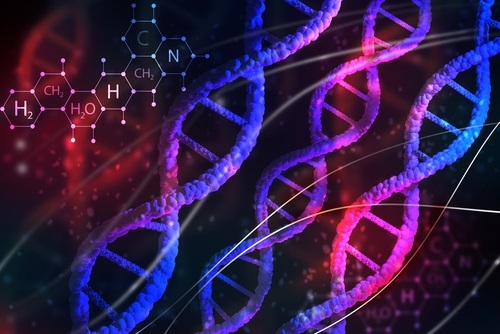
 Data Structure
Data Structure Networking
Networking RDBMS
RDBMS Operating System
Operating System Java
Java MS Excel
MS Excel iOS
iOS HTML
HTML CSS
CSS Android
Android Python
Python C Programming
C Programming C++
C++ C#
C# MongoDB
MongoDB MySQL
MySQL Javascript
Javascript PHP
PHP
- Selected Reading
- UPSC IAS Exams Notes
- Developer's Best Practices
- Questions and Answers
- Effective Resume Writing
- HR Interview Questions
- Computer Glossary
- Who is Who
What is Triple-stranded DNA?
Introduction
DNA or deoxyribonucleic acid is a molecule that carries genetic information in all living organisms. It is composed of four nucleotide bases, namely adenine (A), thymine (T), cytosine (C), and guanine (G).
These bases pair up in a specific manner, with A pairing with T and C pairing with G. This pairing of nucleotides forms the classic double helix structure of DNA. However, there is also a rare phenomenon where three strands of DNA form a triple helix structure.
We will explore the concept of triple-stranded DNA and its potential implications in this current article.

Triple-stranded DNA, also known as H-DNA, is a structure where three strands of DNA come together to form a triple helix structure. This structure is created when a single strand of DNA folds back on itself and pairs up with two complementary strands in a parallel manner. The third strand binds to the major groove of the duplex and forms a triplex structure. This structure is stable under physiological conditions and can be formed under both neutral and acidic conditions.
The formation of triple-stranded DNA can be facilitated by several factors, such as the presence of certain chemical modifications, DNA-binding proteins, and changes in pH or ionic strength. These factors can cause the DNA strands to separate from their classic double helix structure and form a triple helix structure instead.
One of the most notable features of triple-stranded DNA is that it can cause mutations or genetic changes. This is because the third strand of DNA can disrupt the normal functioning of the double helix structure, which can lead to errors in DNA replication or transcription. Triple-stranded DNA can also cause chromosomal rearrangements, which can result in genetic diseases or cancer.
Triple-stranded DNA has been found to exist in various organisms, including humans. It has been observed in several regions of the human genome, such as telomeres, centromeres, and gene promoters. These regions are involved in regulating gene expression and chromosome stability, which suggests that triple-stranded DNA may play a role in these processes.
Researchers have also investigated the potential use of triple-stranded DNA as a therapeutic agent. For instance, triple-stranded DNA can be used to target specific regions of the genome and inhibit gene expression. This could be useful in treating genetic diseases or cancer, where specific genes need to be targeted for treatment. Triple-stranded DNA can also be used to modulate the activity of transcription factors, which can regulate gene expression. This could be useful in developing gene therapies or in understanding the mechanisms of gene regulation.
Another potential application of triple-stranded DNA is in the development of DNA-based nanotechnology. Triple-stranded DNA can be used to create nanoscale structures, such as nanotubes or nanowires, which could have various applications in electronics, energy storage, or biomedicine.
Despite the potential applications of triple-stranded DNA, there are also concerns about its safety and ethical implications. Triple-stranded DNA can cause mutations or chromosomal rearrangements, which can have unintended consequences. This could raise concerns about the safety of using triple-stranded DNA in therapy or nanotechnology. There are also concerns about the ethical implications of using triple-stranded DNA, especially in gene editing or gene therapy.
Conclusion
Triple-stranded DNA is a rare structure that can form when three strands of DNA come together to form a triple helix structure. This structure can cause mutations or genetic changes and can be facilitated by several factors. Triple-stranded DNA has been observed in various regions of the human genome and has potential applications in gene therapy, nanotechnology, and gene regulation. However, there are also concerns about its safety and ethical implications. Further research is needed to fully understand the potential benefits and risks.
FAQs
Q1. What is triple-stranded DNA?
Ans. Triple-stranded DNA, also known as H-DNA, is a structure where three strands of DNA come together to form a triple helix structure. This structure is created when a single strand of DNA folds back on itself and pairs up with two complementary strands in a parallel manner. The third strand binds to the major groove of the duplex and forms a triplex structure.
Q2. What is the difference between double-stranded and triple-stranded DNA?
Ans. Double-stranded DNA is the classic structure of DNA where two strands of DNA pair up in a complementary manner to form a double helix structure. Triple-stranded DNA, on the other hand, is a rare structure where three strands of DNA come together to form a triple helix structure.
Q3. Where is triple-stranded DNA found?
Ans. Triple-stranded DNA has been found to exist in various organisms, including humans. It has been observed in several regions of the human genome, such as telomeres, centromeres, and gene promoters. These regions are involved in regulating gene expression and chromosome stability, which suggests that triple-stranded DNA may play a role in these processes.
Q4. What are the potential applications of triple-stranded DNA?
Ans. Triple-stranded DNA can potentially be used in gene therapy, nanotechnology, and gene regulation.
Triple-stranded DNA can be used to target specific regions of the genome and inhibit gene expression, which could be useful in treating genetic diseases or cancer.
Triple-stranded DNA can also be used to create nanoscale structures, such as nanotubes or nanowires, which could have various applications in electronics, energy storage, or biomedicine.

